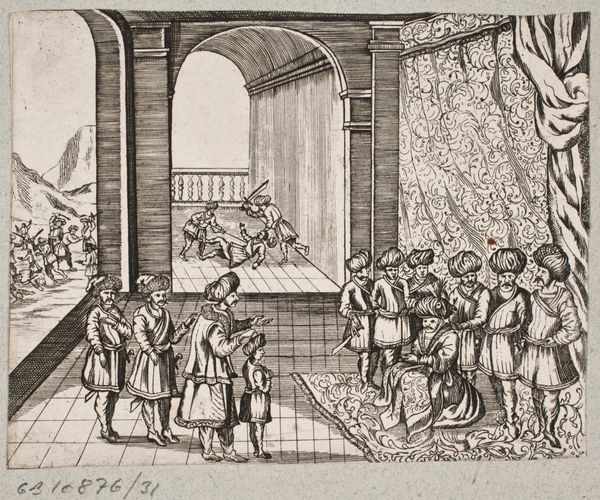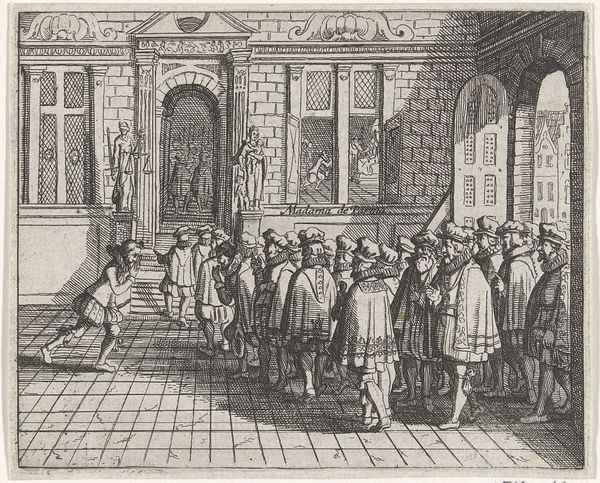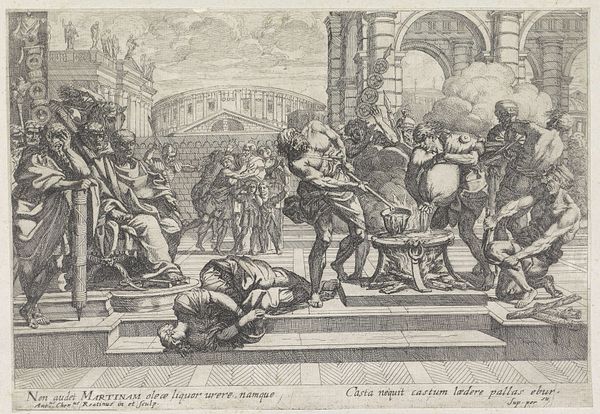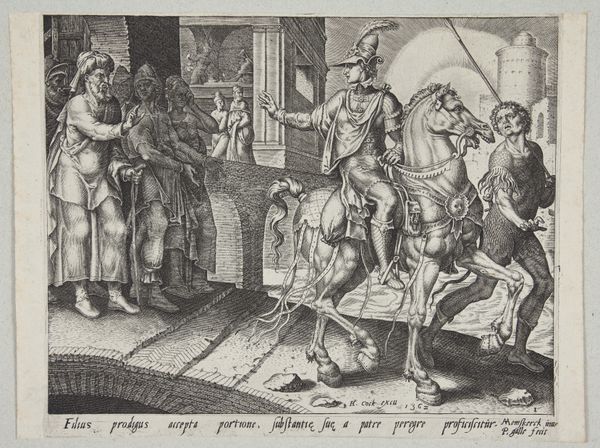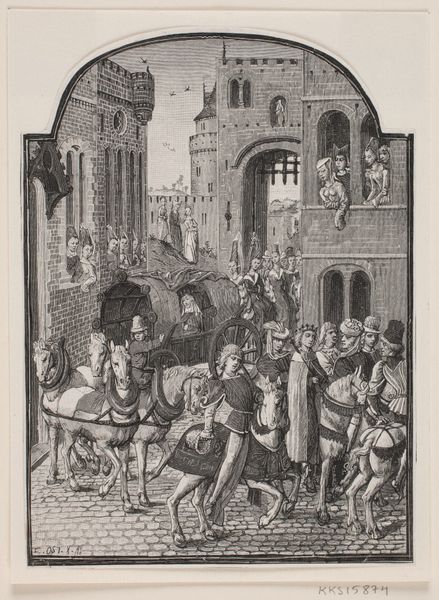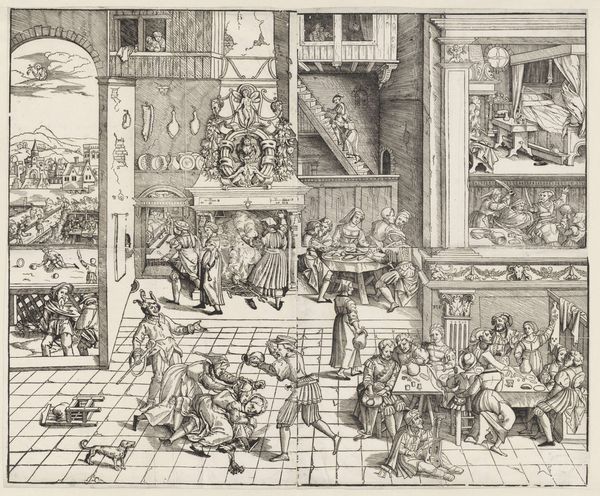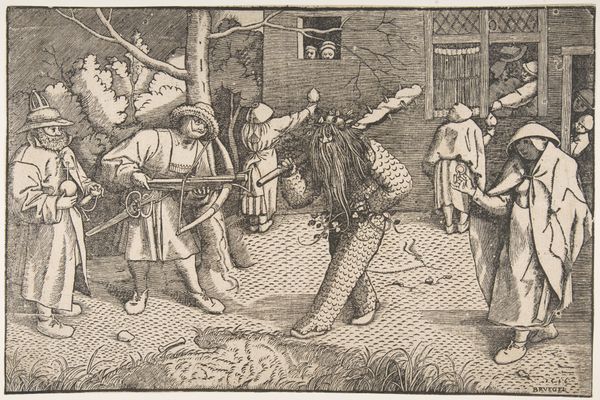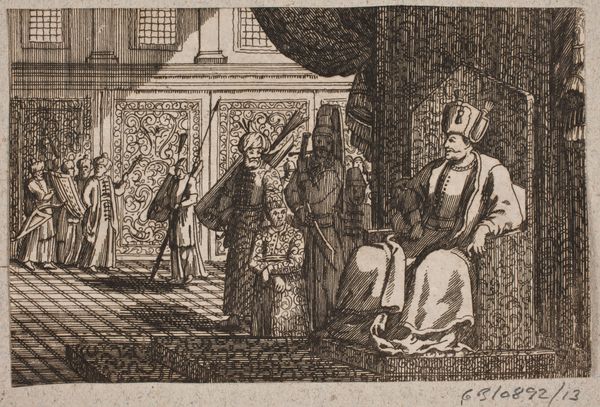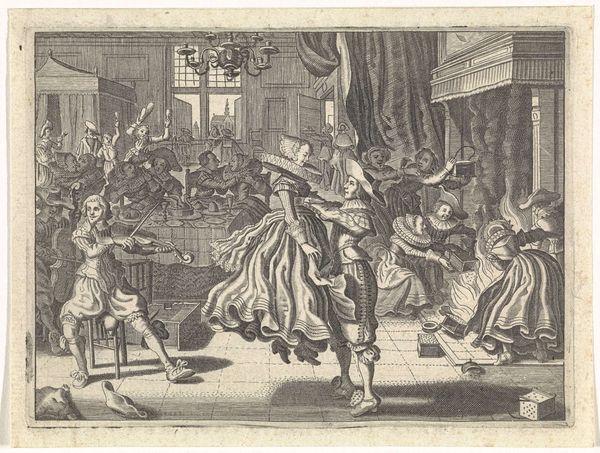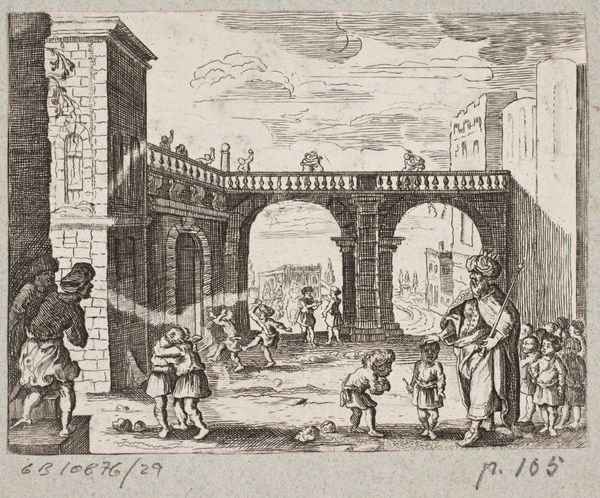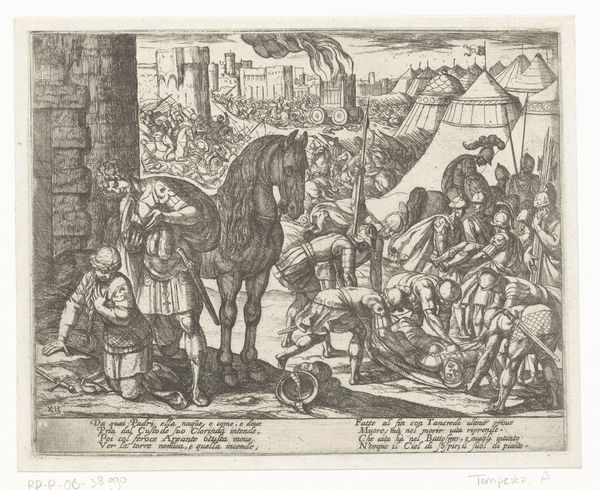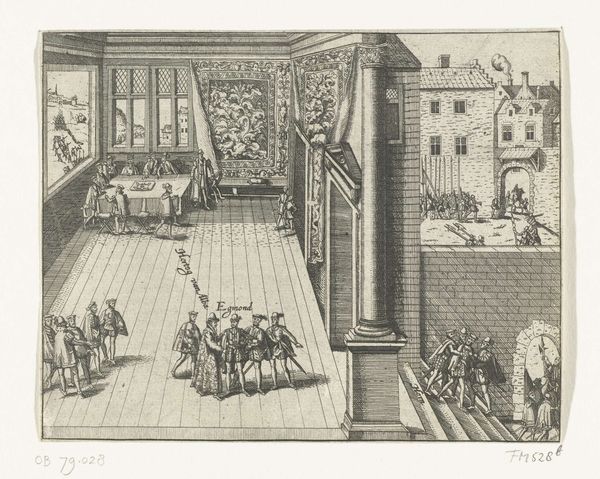![Illustration til Adam Olearius, “Persianischer Rosenthal von einem Sinnreichen Poeten Schich Saadi […]”, Schleswig 1660 by J. Muller](/_next/image?url=https%3A%2F%2Fd2w8kbdekdi1gv.cloudfront.net%2FeyJidWNrZXQiOiAiYXJ0ZXJhLWltYWdlcy1idWNrZXQiLCAia2V5IjogImFydHdvcmtzL2I4MGRlYThmLTRjNTQtNGUxNS04ZmYwLWFlOWQzOTIxMDQzZi9iODBkZWE4Zi00YzU0LTRlMTUtOGZmMC1hZTlkMzkyMTA0M2ZfZnVsbC5qcGciLCAiZWRpdHMiOiB7InJlc2l6ZSI6IHsid2lkdGgiOiAxOTIwLCAiaGVpZ2h0IjogMTkyMCwgImZpdCI6ICJpbnNpZGUifX19&w=3840&q=75)
Illustration til Adam Olearius, “Persianischer Rosenthal von einem Sinnreichen Poeten Schich Saadi […]”, Schleswig 1660 1660
0:00
0:00
print, engraving
#
narrative-art
#
baroque
# print
#
figuration
#
orientalism
#
line
#
genre-painting
#
history-painting
#
engraving
Dimensions: 103 mm (height) x 132 mm (width) (bladmaal)
Curator: Immediately, I notice the dynamism—it feels very lively despite being an engraving. Editor: That's right. We're looking at an illustration from Adam Olearius’s book, “Persianischer Rosenthal,” printed in Schleswig in 1660. J. Muller created this print to accompany the text. It's a fascinating example of Baroque Orientalism, showcasing both genre and history painting. Curator: The contrast between the densely packed figures inside versus the ordered architectural space of the landscape is striking. The artist creates depth cleverly using linear perspective, even in such a small format. Look how the architecture dominates in the exterior. Editor: Yes, the architecture, along with the clothing worn by the figures, reveals quite a bit about the intercultural exchange of the time and place that fostered the production of this book. It’s fascinating how European audiences consumed ideas about the "Orient," largely shaped by works like this and travelogues. This image, serving as an illustration for a poem, itself served a commercial purpose. It was another commodity manufactured, circulated and consumed within Europe. Curator: Focusing on its composition, the scene's layout directs the viewer's gaze, moving from the enthroned figure on the left to the figures on the right, and eventually, drawing them into the receding planes of the outside spaces. It lends itself to storytelling—that visual narrative enhances its illustrative quality, working in symbiosis with the poem. The linear details are simply superb. Editor: And it is because of these images being included, as visual, and often spectacular, evidence that Olearius's book saw the level of success and popularity that it did. Muller’s engraving provided an experience of the poem through an intensified lens of perceived realness and verisimilitude for the European reader and potential investor looking toward foreign and profitable enterprise. Curator: That’s insightful. Thinking about line quality, detail, and spatial organization gives us clues into Muller's aesthetic preferences and his understanding of representing narrative scenes and history in the visual form, in this case in conjunction with the text. Editor: Indeed. When we examine its commercial function as it was situated historically, it also illuminates what kind of economic conditions shaped the very landscape and dissemination of visual culture at the time.
Comments
No comments
Be the first to comment and join the conversation on the ultimate creative platform.
